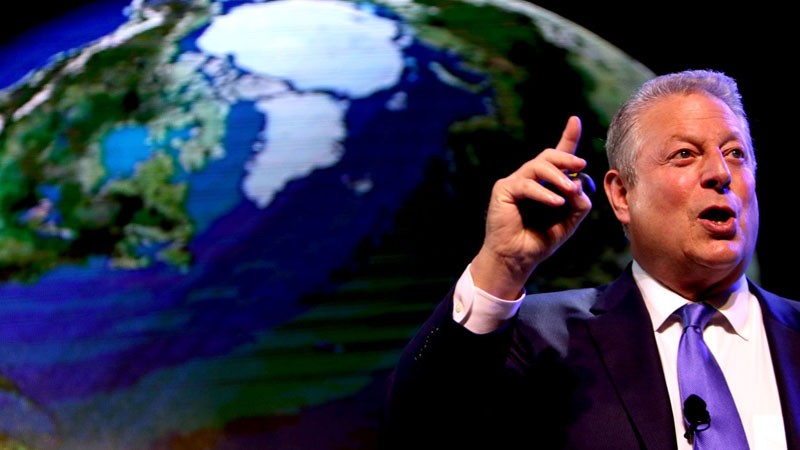Looming water world
AL GORE was scheduled to speak at a conference in Manila this week, but news that the environmental activist and former US vice president arrived in the Philippines last Saturday still caught most of the media unaware. Gore first flew to Tacloban, Leyte, site of one of the world’s most devastating storms on record; this week in Manila, he is presiding over the leadership training of some 700 “climate warriors” from all over Asia, organized by the US nongovernmental organization Climate Reality Project which he founded and chairs.
The visit to Tacloban served to swerve the spotlight back to the province that, in 2013, bore the horrific brunt of Supertyphoon “Yolanda,” the unprecedented scale and power of which, many scientists said, appeared to herald a new age of ever more destructive disruptions in the world ecosystem due to the damage created by climate change. Specifically, as the planet continues to grow warmer, its oceans are projected not only to rise to inundate vast tracts of coastlines and low-lying communities, but also to churn up storms of greater strength and ferocity, inflicting displacement and hardship on millions of people unprepared for such wrenching changes.
In this perfect storm of rising tides and bigger typhoons, the Philippines appears to be an unfortunate frontliner, as an archipelago in the Pacific. “The ocean waters around the Philippines are warming faster than anywhere else on the planet,” said Gore. That is not an unsupported assertion. Just last October, Science Daily reported: “According to data by the World Meteorological Organization, the water levels around the Philippines are rising at a rate almost three times the global average due partly to the influence of the trade winds pushing ocean currents.”
A study by the UN Intergovernmental Panel on Climate Change in 2007 already mentioned that, with sea levels rising from 18 to 58 centimeters, the Philippines would rank as the fourth nation most vulnerable in the world, with 16 of its regions immediately at risk of being submerged. Another study by Climate Central, a US-based research group, warns that the continued rise in the world’s temperatures would see New York, Shanghai, Hong Kong, Mumbai, Miami and other major cities inundated, along with countless smaller communities all over China, India, Bangladesh, Vietnam, the Philippines and other places in Asia, which is “home to 75 percent of the populations that today reside in zones that would no longer be classified as land in a climate-altered future,” according to the study as quoted by Agence France-Presse.
About 20 million of those people are in the Philippines, in megacities like Manila, a flood-prone area even in historic times, and Davao, which may see much of its city center progressively underwater once Davao Gulf begins rising. Many parts of Mindanao are also in danger—the islands of Sulu, Tawi-Tawi and Basilan, the coastal areas of Zamboanga and Maguindanao. The region is already in the grips of a relentless El Niño, another byproduct of climate change, which this year is said to have brought the strongest, most intense visitation of the phenomenon in the last 50 years.
In Manila, Gore has spoken out against the building of more coal plants, the industrial technology that burns greenhouse gases and contributes the most to global warming. Too bad he doesn’t appear to have a meeting scheduled with President Aquino; he could bring the message directly to the apparently inattentive leader, who, not too long ago at the Paris climate talks, lamented that “countries like the Philippines bear a disproportionate amount of the burden when it comes to climate change,” and also said his administration “continues to pursue vital reforms to address climate change” and “to make interventions that mitigate the impacts of climate change.”
That was last December. Barely a month later, in early January, Mr. Aquino was in Davao to open a new coal-powered plant, among the 21 such projects that have been green-lighted by his administration.
There is no longer much to hope for in the current dispensation, it thus appears. If the Philippines must begin to seriously fortify itself against climate change, the electorate should demand of the five contenders for the presidency concrete, feasible policies on how they plan to save this country from the looming climate apocalypse.
















